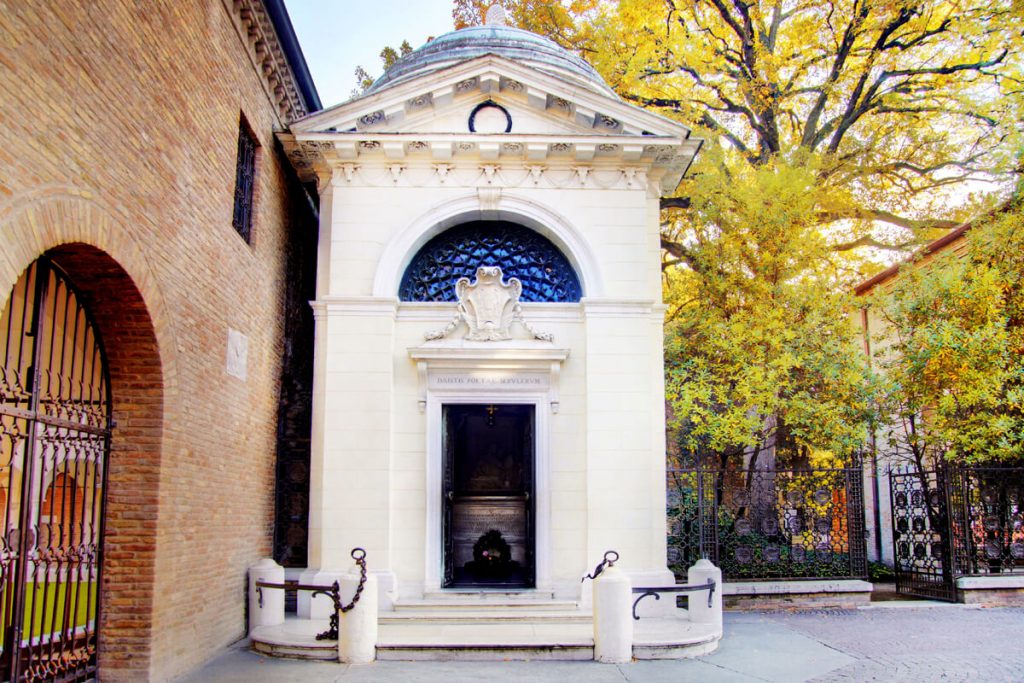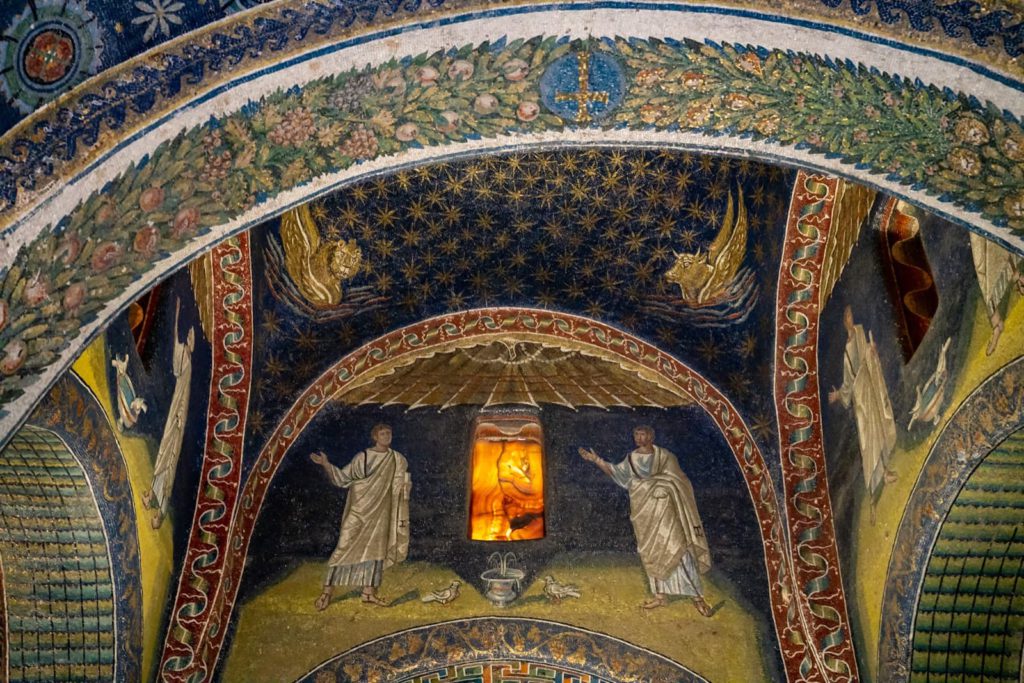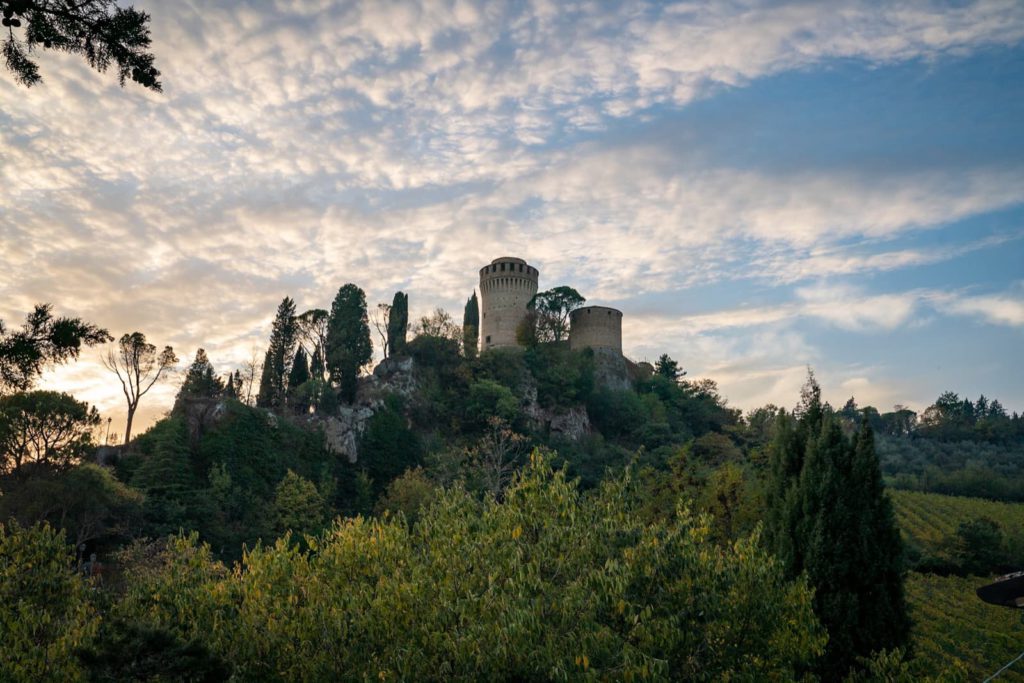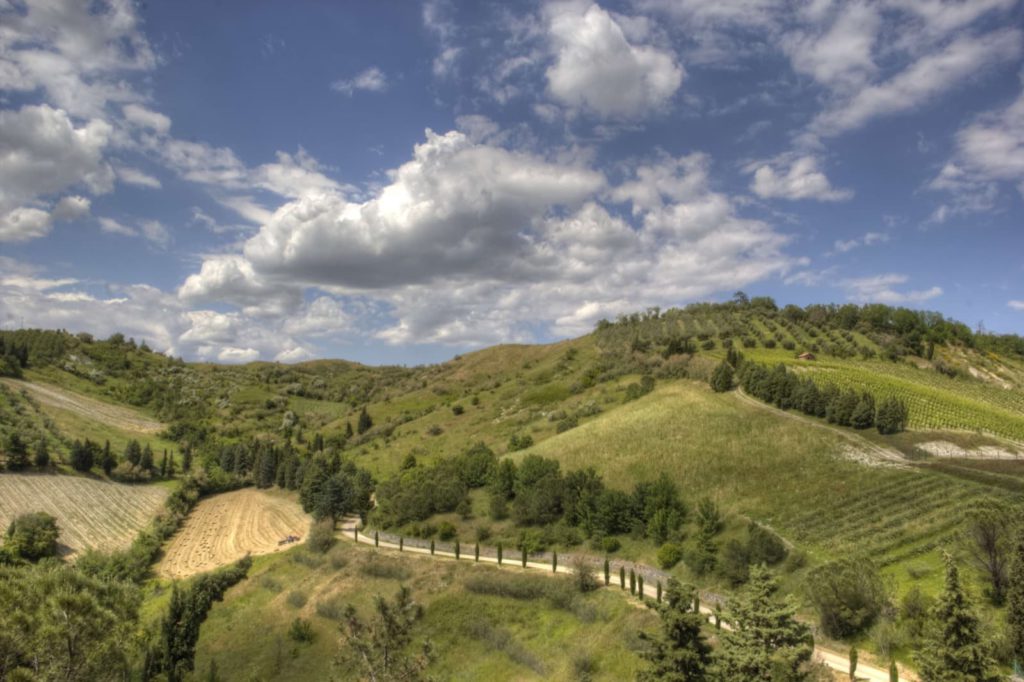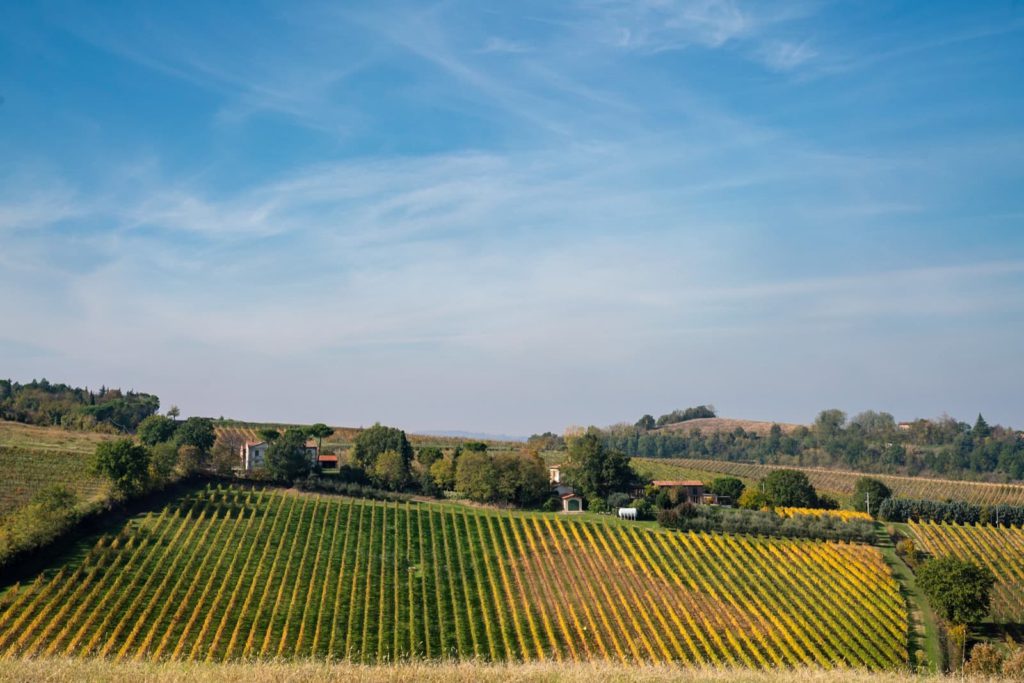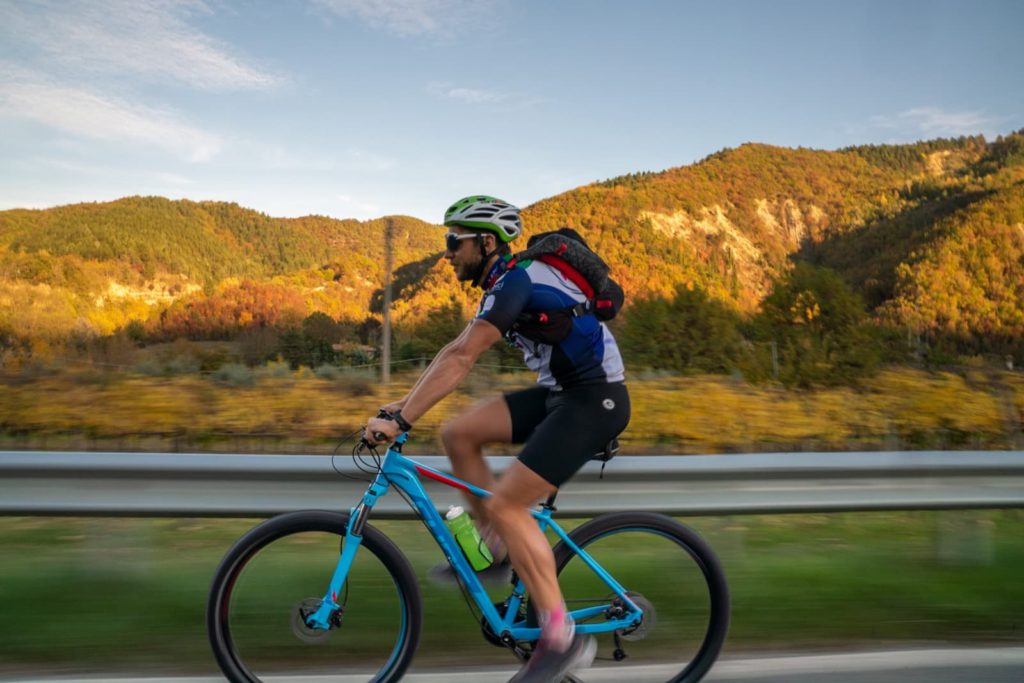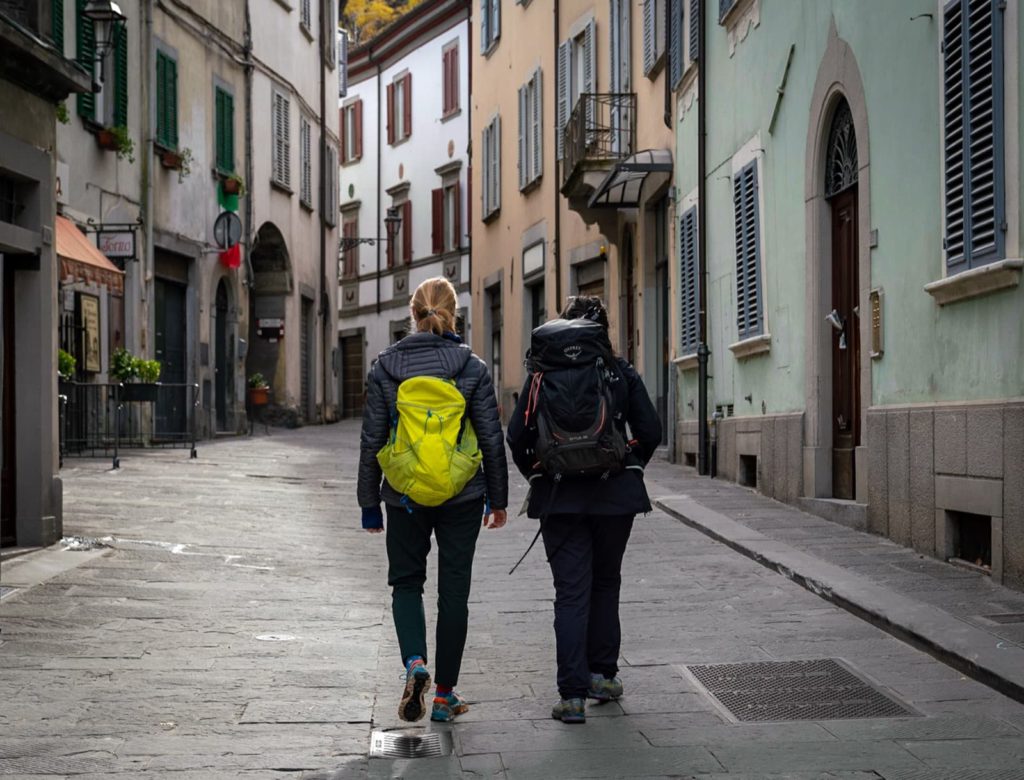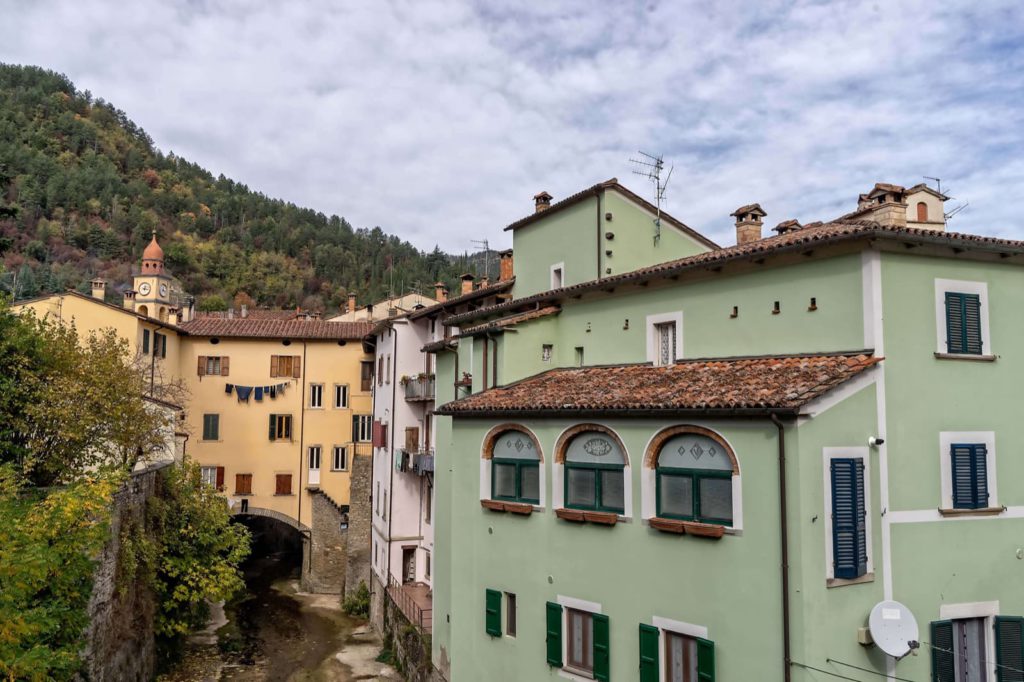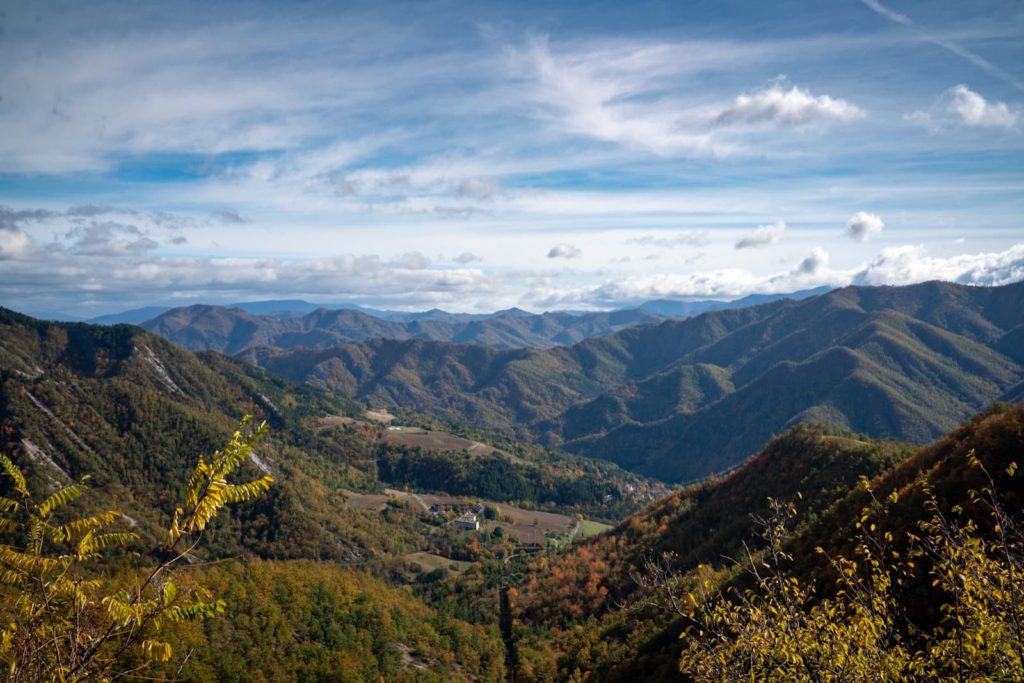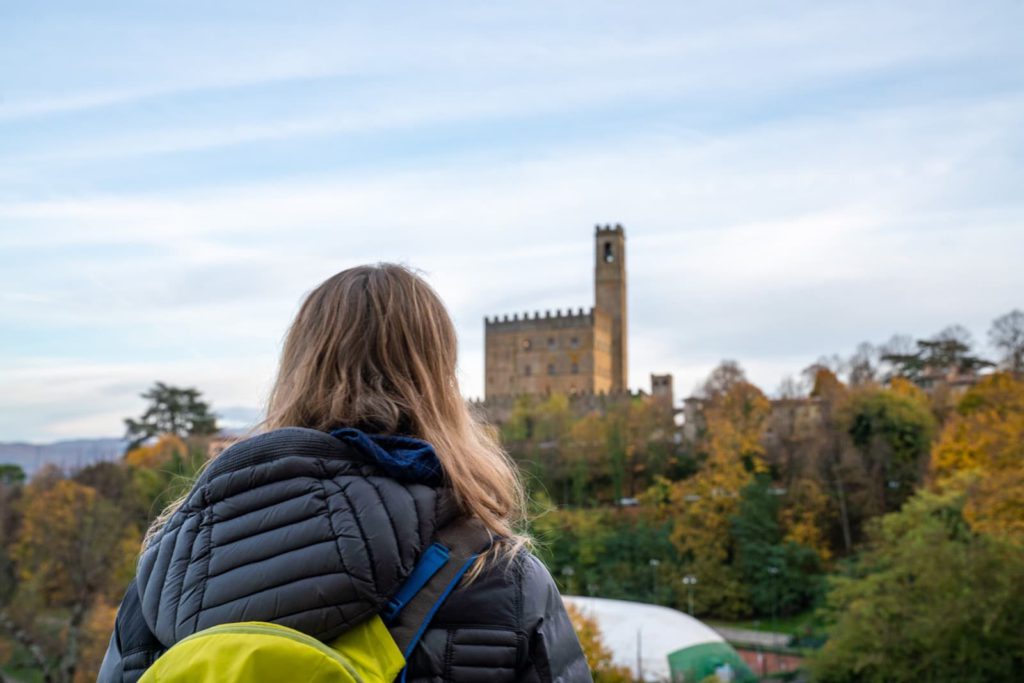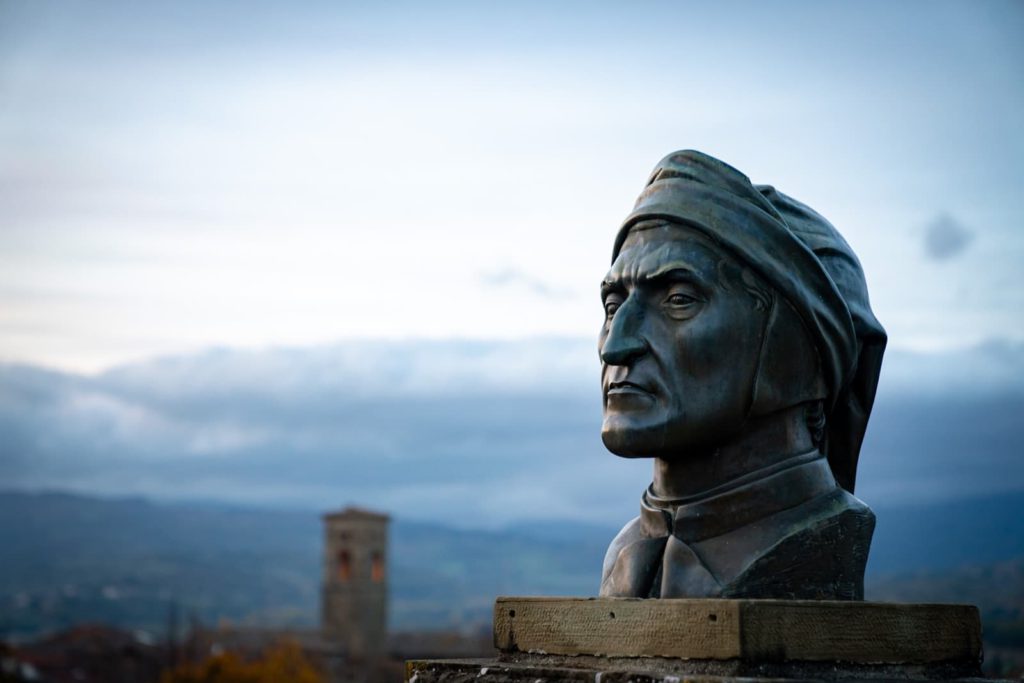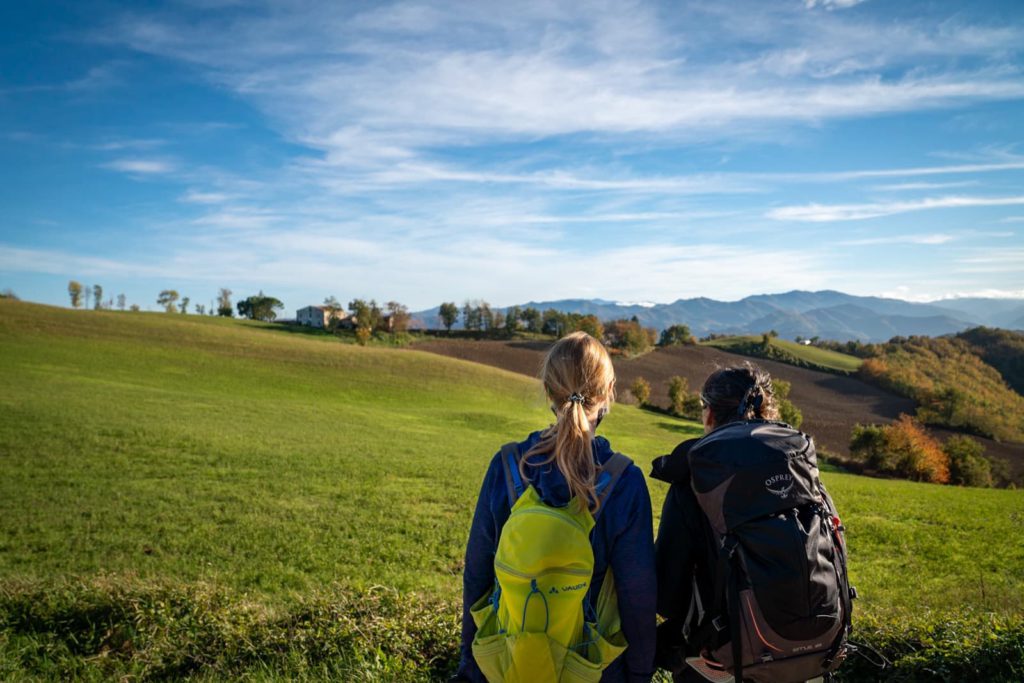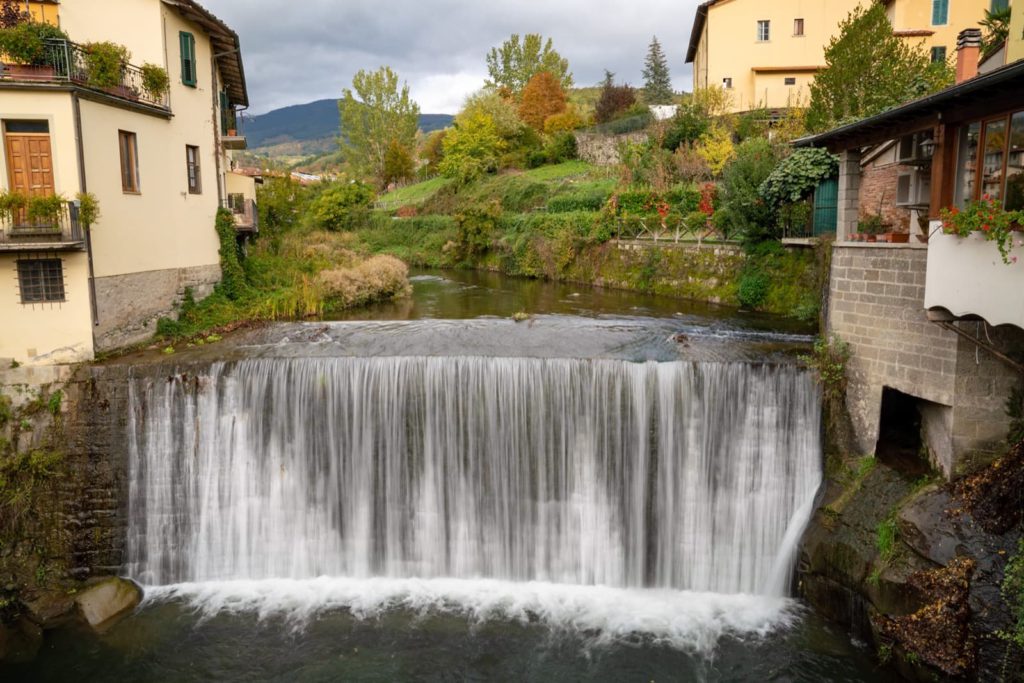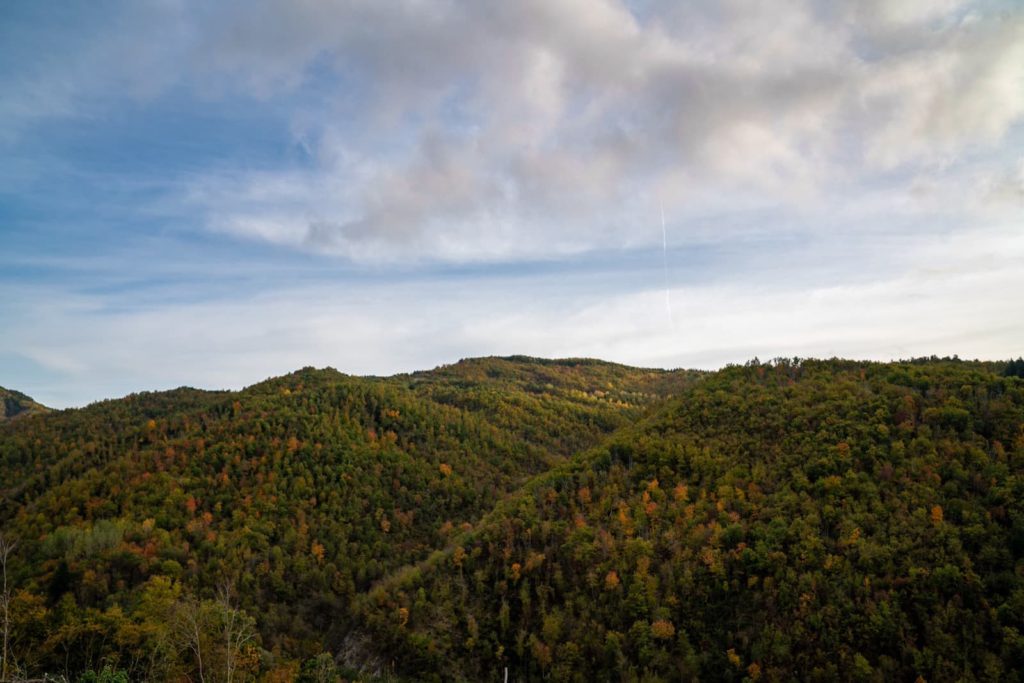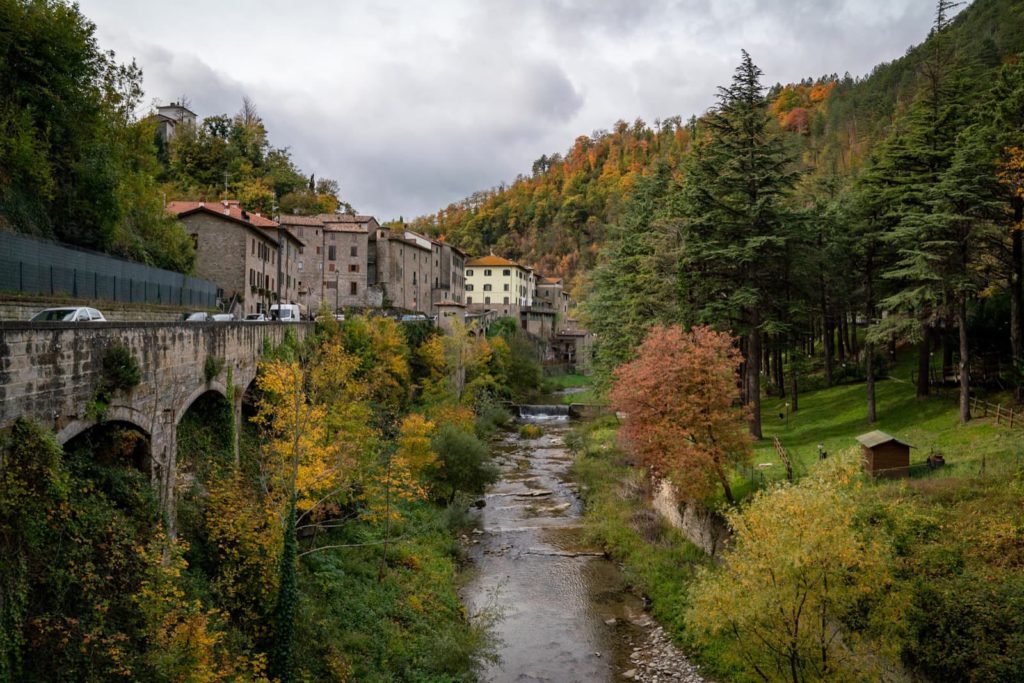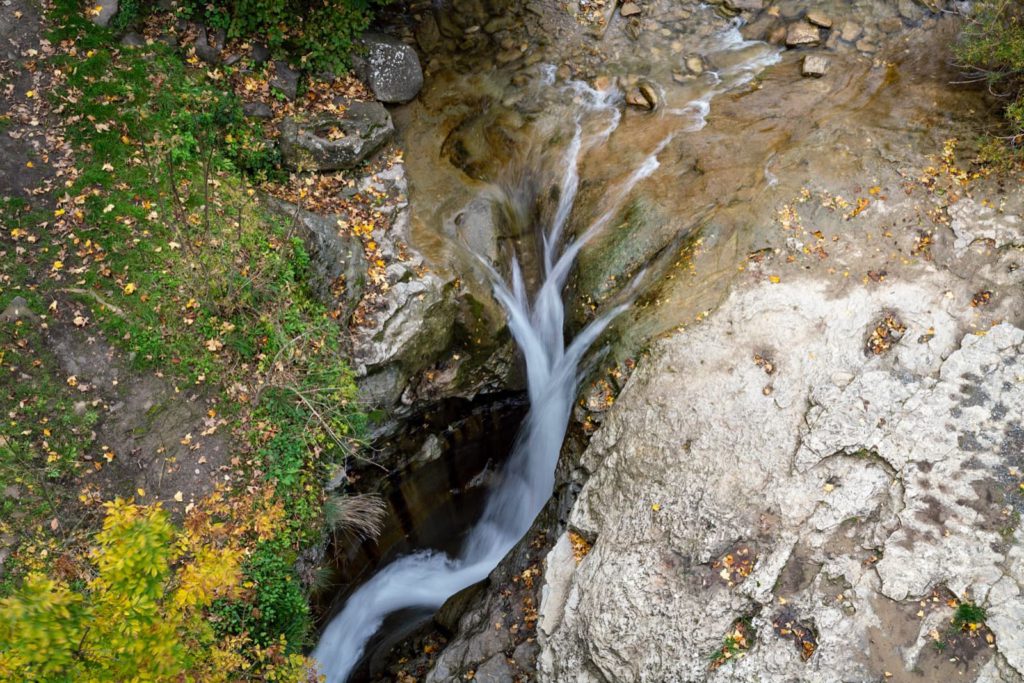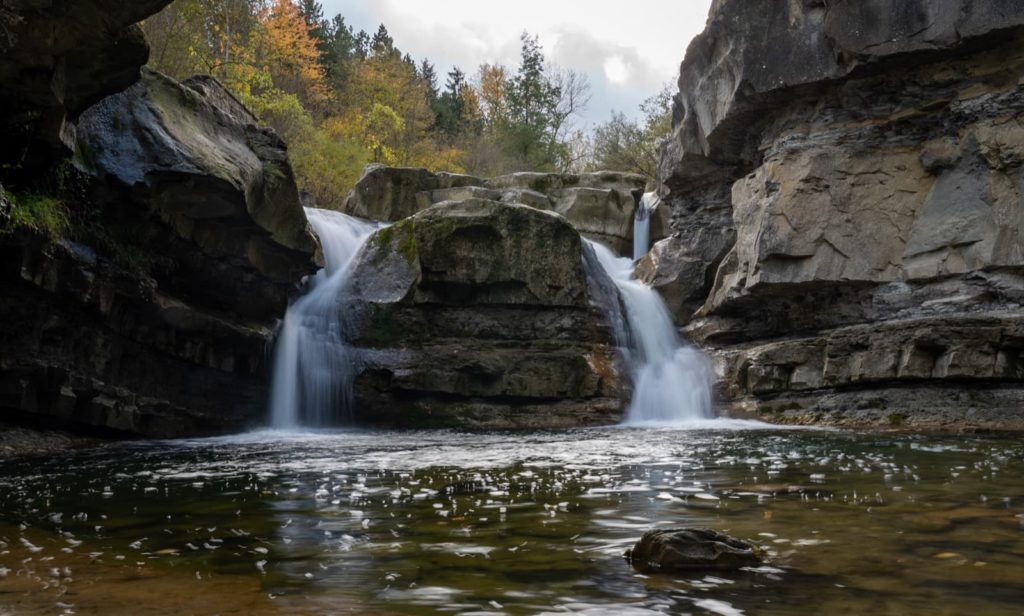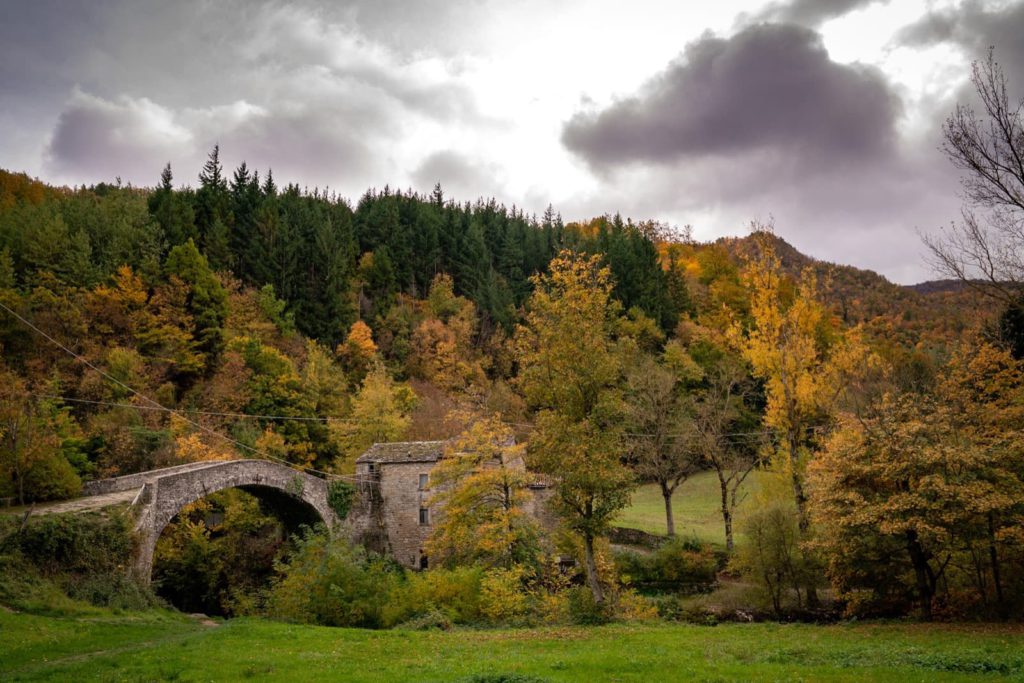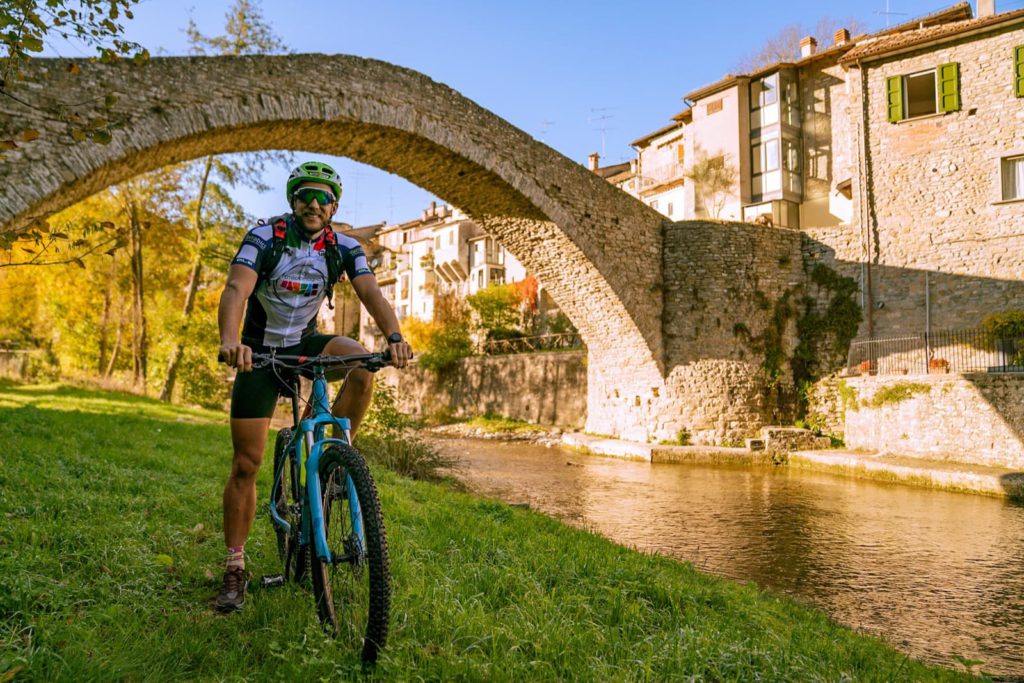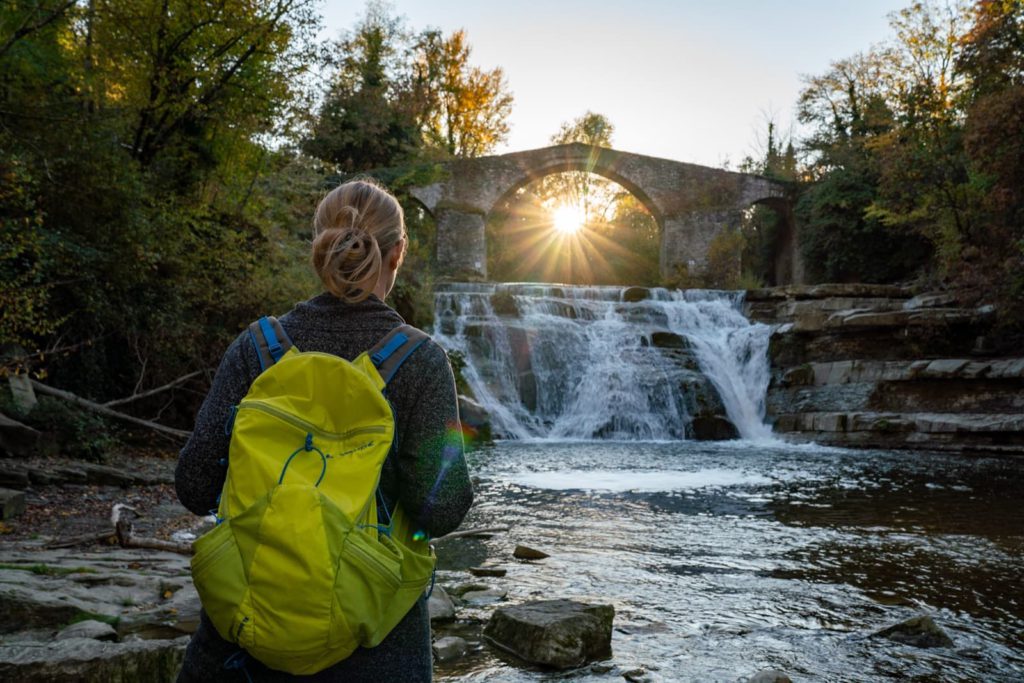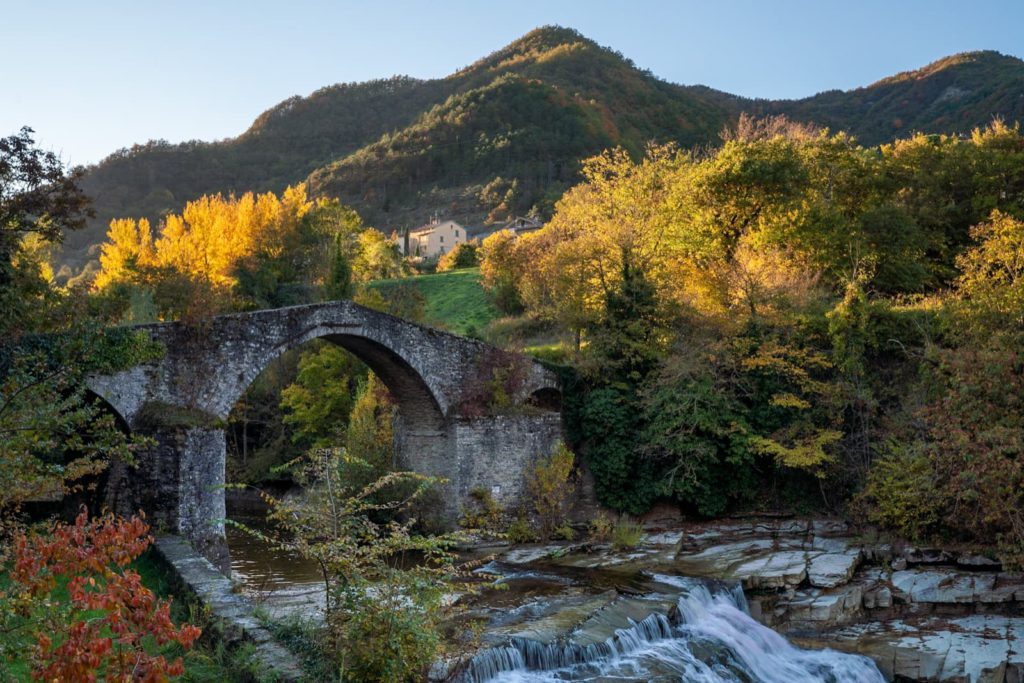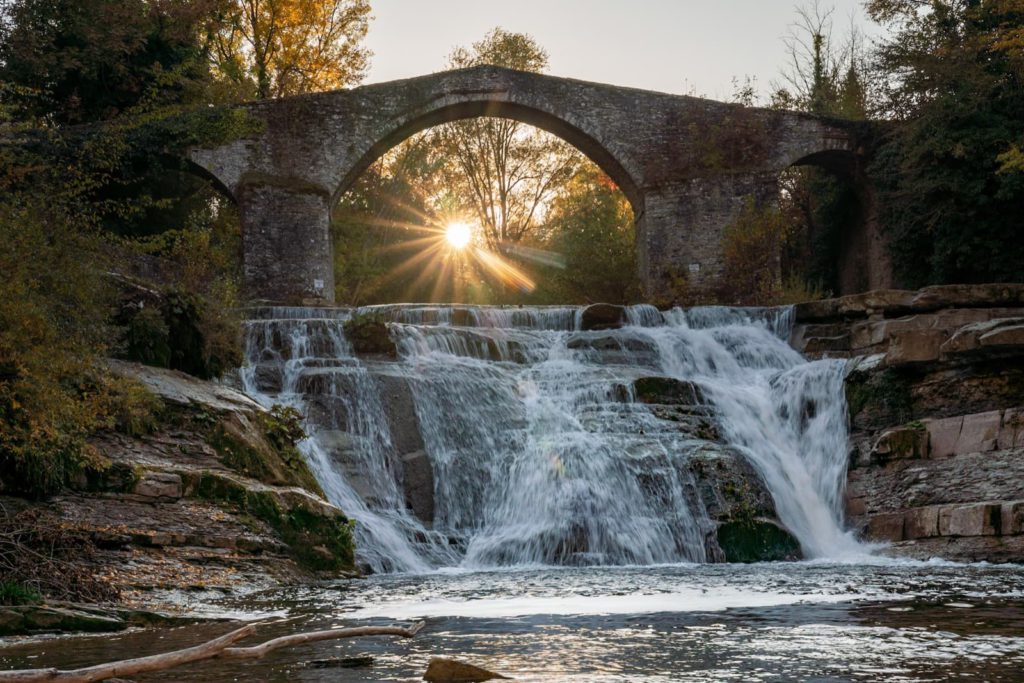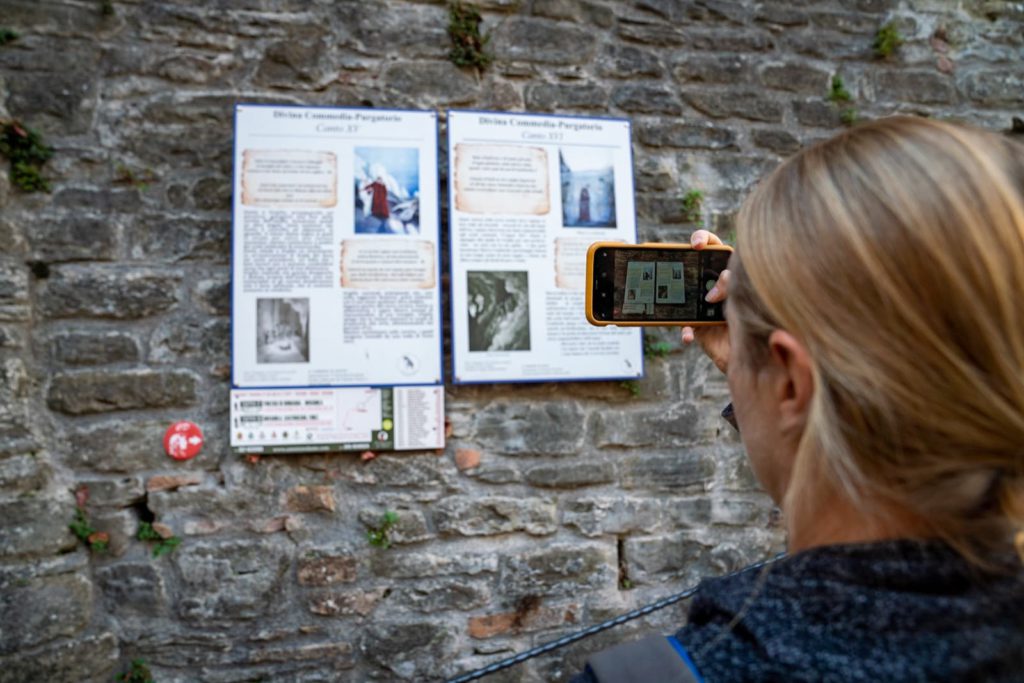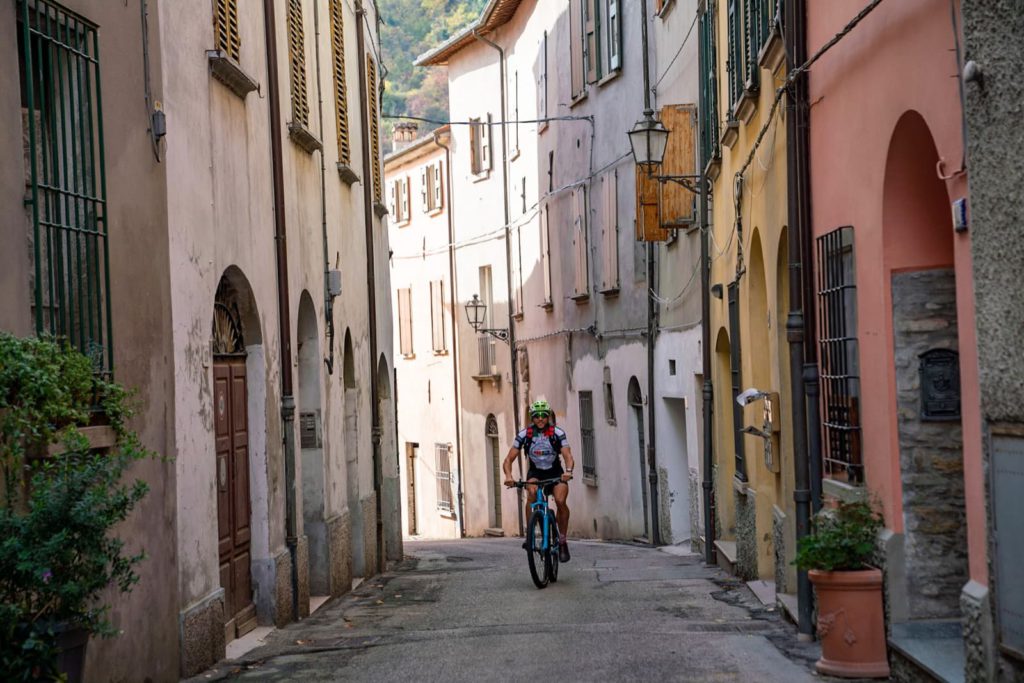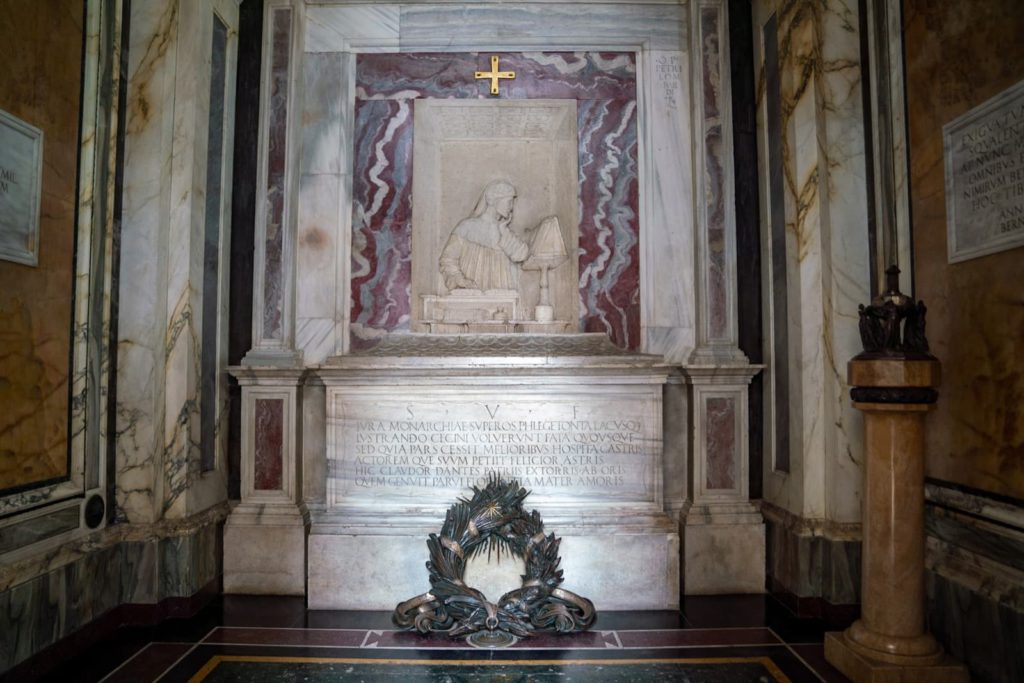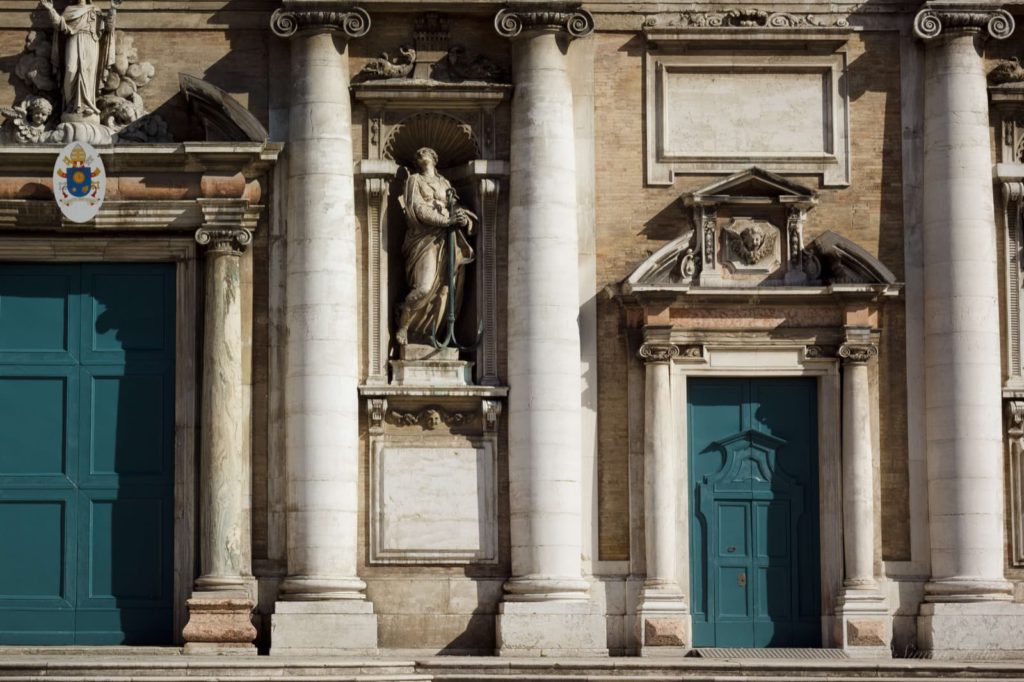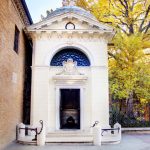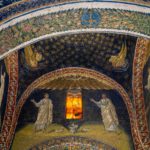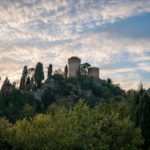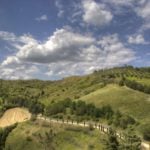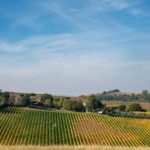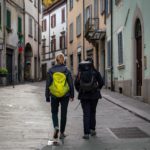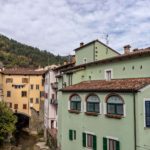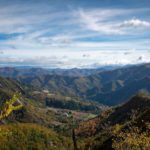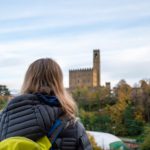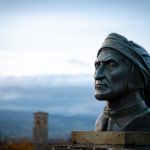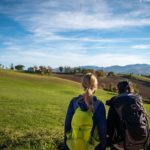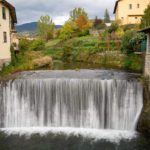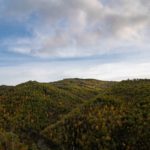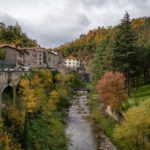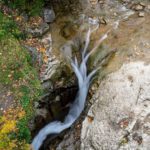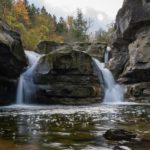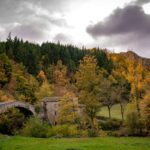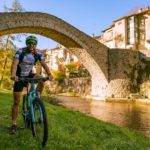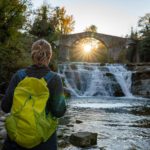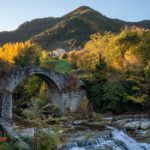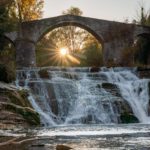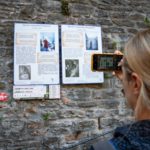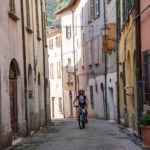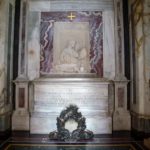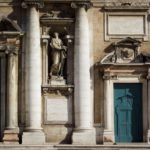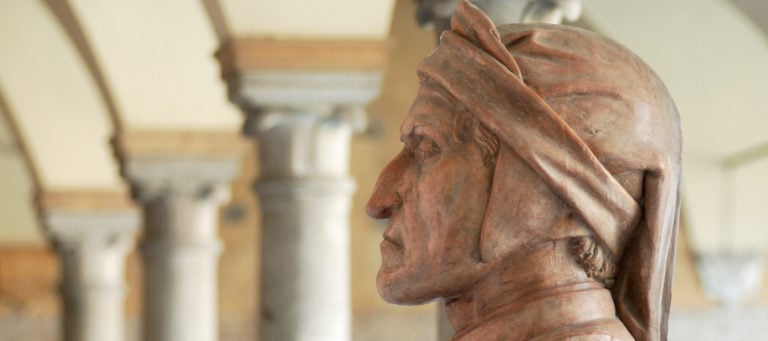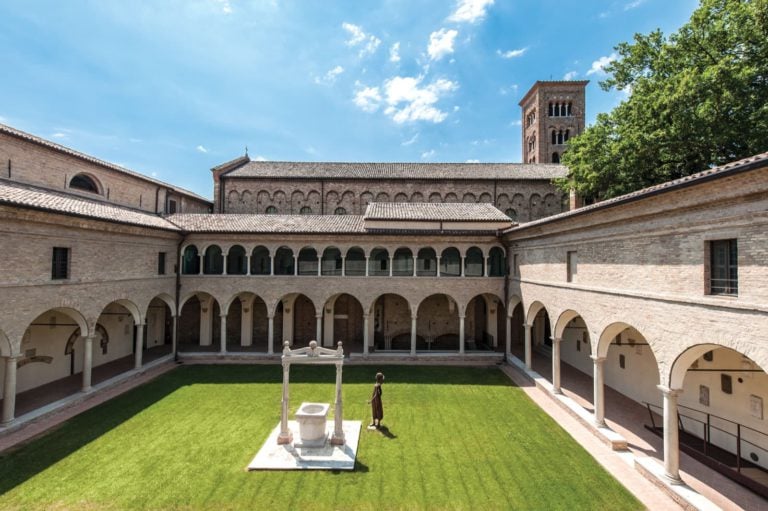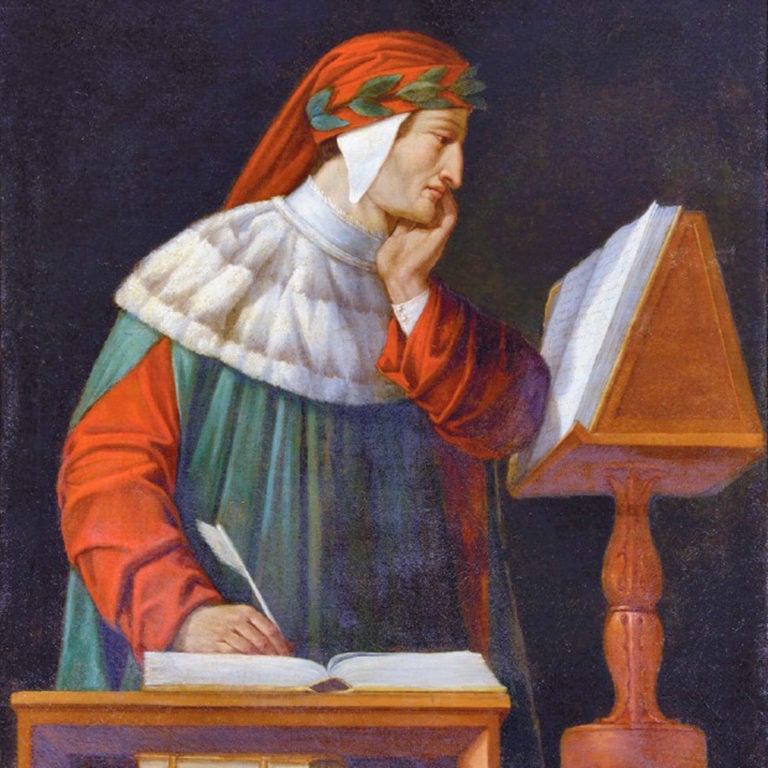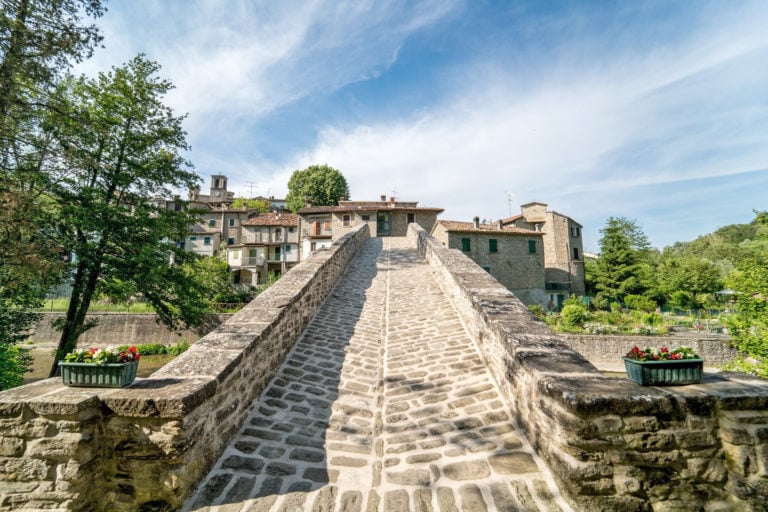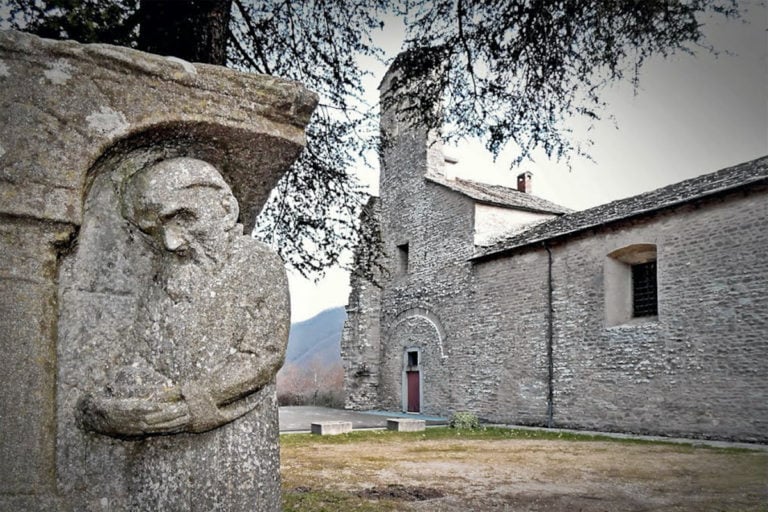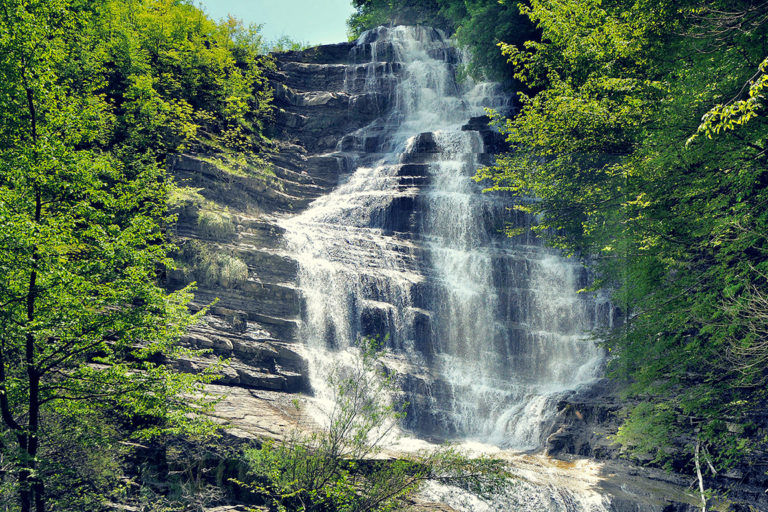Many great stories are the result of great journeys – real or imagined, physical or metaphysical ones, like Dante’s peregrinations through the Underworld, narrated in the Divine Comedy.
Most of us will have heard of Dante and Virgil’s adventures through the circles of the Inferno, between demons and damned souls; of their journey up to the mountain of Purgatory, and finally up to Paradise alongside his sweetheart Beatrice, until he reaches his final vision – l’amor che move il sole e l’altre stelle (love, that moves the Sun and the other stars).
Dante was also a great traveller in real life. After being exiled from his native Florence in 1301, he spent the remainder of his life moving between courts and castles, until his death in Ravenna twenty years later.
The great poet’s wanderings through Romagna and Tuscany can be retraced by modern-day pilgrims along Dante’s Walk, a ring-route connecting Firenze and Ravenna, the poet’s places of birth and death.
Ravenna, Dante’s Tomb | Ph. Giacomo Banchelli
Ravenna, Mausoleum of Galla Placidia – Dante’s Way
Brisighella Fortress – Dante’s Way
Brisighella – Dante’s Way
Oriolo dei Fichi – Dante’s Way
Dante’s Way by bike
Marradi – Dante’s Way
Marradi – Dante’s Way
Casentinesi Forests – Dante’s Way
Poppi Castle – Dante’s Way
Poppi – Dante’s Way
Dante’s Way, hiking
Pratovecchio Stia – Dante’s Way
Casalino – Dante’s Way
Premilcuore – Dante’s Way
Premilcuore, Grotta Urlante Waterfall – Dante’s Way
Premilcuore, Grotta Urlante Waterfall – Dante’s Way
Premilcuore, Roman Bridge – Dante’s Way
Portico di Romagna – Dante’s Way
Portico di Romagna – Dante’s Way
Portico di Romagna – Dante’s Way
Portico di Romagna – Dante’s Way
Portico di Romagna – Dante’s Way
Dovadola – Dante’s Way
Ravenna, Dante’s Tomb – Dante’s Way
Ravenna – Dante’s Way
Practical Info
Dante’s Way is 395 km long, divided in 21 stages along trails and paths, some of which date back to Etruscan times.
It can be covered by hikers between March and November, since it reaches altitudes of up to 1500 meters which can be covered in snow during the winter months. On top of that, accommodation in mountain areas and small villages may be hard to find in winter.
The route is loop-shaped, starting in Ravenna and travelling south-west to Florence via Brisighella, and the Acquacheta waterfalls.
From Florence, the ‘return’ path to Ravenna crosses the Casentino valley, and the charming villages of Premilcuore, Dovadola, and Portico di Romagna.
Dante’s Way crosses towns and villages where the poet stayed in real life, as well as places mentioned in the Divine Comedy, like Acquacheta waterfall.
Along the route, you’ll find info panels highlighting Dante’s connection with the place.
Naturally, you can also reach locations along Dante’s Way. Here are some of the highlights you’ll encounter along the way, following the footsteps of Italy’s greatest poet on a journey through culture, history, and nature, between Romagna and Tuscany.
Dante’s Way Highlights – Ravenna / Florence
Ravenna
Don’t be in a rush to hit the trail – Ravenna deserves to be explored for a few days, to discover its incommensurable historical and artistic heritage. The town is UNESCO-listed because of its beautiful Byzantine mosaics – San Vitale and Sant’Apollinare in Classe are probably the best known, but don’t miss lesser known gems like the Mausoleum of Galla Placidia and Baptistry of Neon.
Start your journey at the Tomb of Dante, a neoclassical monument in the historic centre of the city, where the Poet’s remains were laid to rest. Dante’s journeys didn’t end after his death in 1321 – his bones were moved several times, and they were even lost for several decades, until they were found by a student in a small box hidden within a wall.
Ravenna’s connection with Dante’s life doesn’t end here. The town was also the birthplace of Francesca, the star-crossed lover made famous by chapter V of Inferno, where she is reunited with her lover Paolo.
Oriolo dei Fichi
From Ravenna, Dante’s Way heads southwest, bypassing Faenza in the direction of Oriolo dei Fichi, a tiny hamlet dominated by a 15th century tower.
At the time, Oriolo dei Fichi was contended between the lords of Faenza and the Dioceses of Ravenna, and a tower was built on the site of an earlier Medieval castle for military purposes. About a century later, Oriolo and its tower became part of the territory of Faenza, and the tower lost its strategic importance.
The tower of Oriolo is open for visits between April and October, on Saturday and Sunday afternoons. Entrance is free – it’s worth climbing to the top of the tower for a spectacular view stretching all the way to the Apennines foothills, including fields,farmhouses and vineyards, including an ancient grape grown only in Oriolo and surrounds that produces Centesimino wine.
At the entrance of the tower, info panels show verses and illustrations from chapters VIII, IX and X of Inferno, narrating the arrival of Dante and Virgil to the infernal city of Dite, and their encounter with two damned souls in the circle of heretics.
Brisighella
The third stage of Dante’s Way is one of the most scenic, covering 17 km between Oriolo dei Fichi and Brisighella, crossing the calanchi, hills made of clay and gypsum formed as a result of erosion.
Brisighella is one of the most beautiful small towns crossed by this long-distance trail. Try to arrive in the afternoon, and spend some time exploring its historic centre, with narrow streets lined by pastel-coloured houses.
The most unique thing to see in town is the Via degli Asini, an elevated road once used to transport gypsum on the back of donkeys, now covered by buildings and lit by arch-shaped windows. Brisighella is surrounded by three rocky hills, atop which you’ll find the Castle, the Clock Tower, and the Monticino Church.
When sunset comes, climb up to the Clock Tower, where you can get a bird’s eye view of Brisighella, with its terracotta roofs surrounded by hills and countryside. If you have time, Brisighella is the perfect place to spend a ‘rest day’ – the town is a pleasant place to explore, surrounded by scenic trails and cycle paths immersed in nature.
Marradi
After Brisighella, Dante’s Way continues towards the ruined church of Gamberaldi, another very scenic spot, and then it momentarily leaves Emilia Romagna to enter Tuscany, where Marradi is located.
Marradi was the birthplace of Dino Campana, a famous Italian poet, and it’s worth stopping by for its elegant historic centre, framed by the peaks of the Apennines and lined with elegant buildings.
Marradi is also known for its local chestnuts – come autumn time, you’ll find them for sale in wicker baskets all over town.
San Benedetto/Acquacheta
Leaving Marradi behind, you’ll be heading back into Emilia-Romagna. The destination is the small mountain village of San Benedetto in Alpe, in the heart of the Foreste Casentinesi National Park, straddling the regions of Emilia-Romagna and Tuscany.
This stage is one of the longest and hardest of the entire trail, with a considerable uphill altitude difference, but you’ll be rewarded by the stunning sight of the Acquacheta waterfall, created by the Montone river tumbling 70 meters over a sandstone wall.
You’ll be hearing the waterfall long before you approach, as you hike surrounded by secular trees. In the XVI chapter of Inferno, Dante compared the rumble of the Acquacheta waters to the Flegetonte, a river of boiling blood where thieves and killers are damned to spend eternity.
Even as that stream which holdeth its own course
The first from Monte Veso tow’rds the East,
Upon the left-hand slope of Apennine,
Which is above called Acquacheta, ere
It down descendeth into its low bed,
And at Forlì is vacant of that name,
Reverberates there above San Benedetto
From Alps, by falling at a single leap,
Where for a thousand there were room enough
(Inferno, Chapter XVI, 94-102)
Florence
Dante’s hometown needs no introduction, having amazed visitors from all over the world from several centuries. Even if it’s not your first time in town, and you visited several times before, you’ll sure to be amazed by the view of the city as you approach from afar, with the Arno River bisecting the city and the dome of the Duomo dominating the skyline.
In Dante’s times, Florence looked very different from now. The town is the birthplace of Renaissance, and most of what we see nowadays dates back to the 15th/16th century. An exception to this is Palazzo Vecchio, one of the most famous sights in town overlooking Piazza della Signoria, built in 1300 – the same year when Dante first put pen to paper, composing those fateful lines.
Midway upon the journey of our life
I found myself within a forest dark,
For the straightforward pathway had been lost.
(Inferno, Chapter I, 1-3)
Another unmissable sight for those following the steps of the great poet is his birthplace, now housing a museum dedicated to Dante’s life and work. You won’t just learn about Dante as a poet, but also as a soldier, a politician and a man.
Before turning your back on Florence and starting your return path to Ravenna, there’s one more place to visit – Dante’s cenotaph in the Church of Santa Croce, built in the hope that the Poet’s body would one day be returned to his hometown. It portrays the poet sitting on a throne, supported by a statue depicting Italy, while another statue representing Poetry cries on his grave.
Dante’s Way Highlights – Florence / Ravenna
Poppi
The ‘return’ branch of Dante’s Way starts by crossing the Casentino valley, the ancestral home of the Guidi family, one of the most important Tuscan noble families in the Middle Ages, who ruled over this valley for 400 years.
Similarly to Dante, the Guidi family supported the Holy Roman Empire in its power struggle against the Pope, a view opposed to that the central Florence government. For this reason, the poet sought refuge in their castles and mansions when he was exiled from his hometown. He is said to have spent up to a year in the castle of Poppi, where he composed the XXXIII chapter of Inferno.
Poppi is a quick deviation from Dante’s Way, being located only 8 km from Prato di Strada, where the second stage of the return hike from Florence ends. It’s worth making the detour, to spend some time exploring the pretty walled city, and enjoying the views over the surrounding countryside.
If you have time to see one sight, make sure you visit the Castle. Inside, you’ll find a chapel decorated by Taddeo Gaddi, one of Giotto’s students, and a layout of the famous battle of Campaldino between Guelphs and Ghibellines, where Dante also fought.
Foreste Casentinesi
After leaving Poppi, the following three stages cross the Casentino Valley, dominated by the Foreste Casentinesi National Park. It’s time to leave towns behind and head into the wilderness – if you like walking through forests, and you’re not afraid of hiking uphill, this is the section you’ll probably love best.
The Foreste Casentinesi National Park stretches along the Apennines, connecting Tuscany to Romagna – over 80% of the park is covered in secular beech and fir forests, among the wildest in Italy, virtually untouched by human development.
The Foreste Casentinesi also include the highest altitude point of Dante’s Way – Rifugio La Burraia, a mountain hut open in summer, located at 1400 meters in a scenic location right along the border between Romagna and Tuscany.
If you can, plan to hike in summer, to be able to spend a night in this unforgettable location, surrounded by beech forests and meadows from where you can see the peaks of the Apennines stretching all around you.
Alternatively, a great time to visit the Foreste Casentinesi is Autumn – late October is the time where the colours are at their most vivid, and the mountains look like an artist’s palette, with splashes of burnt orange, golden yellow and bright red.
Premilcuore
Continuing across the Foreste Casentinesi National Park, the first village you’ll encounter is Premilcuore, a tiny town of just over 700 souls. Premilcuore looks, and feels, suspended in time – it’s in a remote location, connected to nearby towns by twisty mountain roads.
Premilcuore houses a castle once owned by the Guidi family, and it is crossed by the Rabbi, a fast-flowing mountain river. Just outside the town, it’s possible to visit two waterfalls, created by the Rabbi as it makes its way through the valley.
The most famous is the Grotta Urlante, a spiral-shaped waterfall ending in an emerald-coloured pool of water, surrounded by rocks. The name Urlante (shouting) refers to the noise made by the water as it rushes through the rocks.
Nearby there’s also a Roman bridge, and a panel recounting Dante’s journey through the circle of envy in the XIII chapter, where he met souls with their eyes sewn shut with wire.
Portico di Romagna
Only 9 km from Premilcuore, you’ll reach Portico di Romagna, an enchanting town with steep cobbled streets, surrounded by mountains, forests, and waterfalls.
The way into Portico is one of the most scenic of the entire trail – you’ll pass an old mill first, and then the spectacular Ponte della Maestà, a single-arch Medieval bridge still preserving the original stonework.
Wandering around Portico, you’ll notice another name used alongside Dante’s – that of Beatrice, the poet’s famous sweetheart. Beatrice’s last name was Portinari, and her family hailed from Portico di Romagna, where Palazzo Portinari still stands to this day.
Before heading to your accommodation or continuing on, make sure you visit two places in Portico di Romagna – the spectacular Brusia a Bocconi waterfall, just outside town, and the Dante e Beatrice Municipal Gardens, the ideal place to take a break from all the hiking.
In case you’re exploring Dante’s Way by car, please be aware that SP25, connecting Premilcuore to Portico di Romagna, is currently closed due to a landslide – even though many GPS apps still mark it as open. The easiest way to travel between the two towns is driving along SS9ter and SP23 to Rocca San Casciano, and then continuing along SS67 – or vice versa.
Dovadola
Dovadola, where the next stage ends, is probably the oldest place you’ll encounter along Dante’s Way. The first settlement is of Celtic origin, predating Roman times.
As you approach Dovadola, you’ll notice a large, squat castle overlooking the town – it was first built in the 12th century, and owned by (yes, you guessed it!) the noble Guidi family.
Nowadays, it’s a sleepy little town on the edge of the Apennines. Take some time to walk around the streets, and if you want to hike a little more, you can take the trail leading 300 meters up to the Eremo of Montepaolo, where Saint Anthony of Padova lived in the 13th century.
Forlì
After Dovadola, you’ll be leaving the Apennines behind you. The rest of Dante’s Way continues downhill, crossing the thermal town of Castrocaro all the way to Forlì, where the following stage ends.
Forlì is a busy, bustling Romagna town, located along the Via Emilia, the road of Roman origin connecting all the main cities in Emilia-Romagna. The way into Forlì is anything but a bucolic experience – instead of forests and mountain trails, you’ll be crossing suburban neighbourhoods and city parks.
Once you reach the historic centre, take a break in Piazza Saffi, the main square in town. Around the square you’ll find the San Mercuriale Abbey, the best-known symbol of Forlì, and the Palazzo delle Poste, built in the 1930s when the square was remodeled in Fascist style.
Leaving Forlì behind, Dante’s Way continues through Pontevico, before finally reaching Ravenna. Make sure you pay another visit to the Tomb of Dante – you’ll probably feel closer to the experience of the eternal poet, after walking along his footsteps through Romagna and Tuscany.
Author
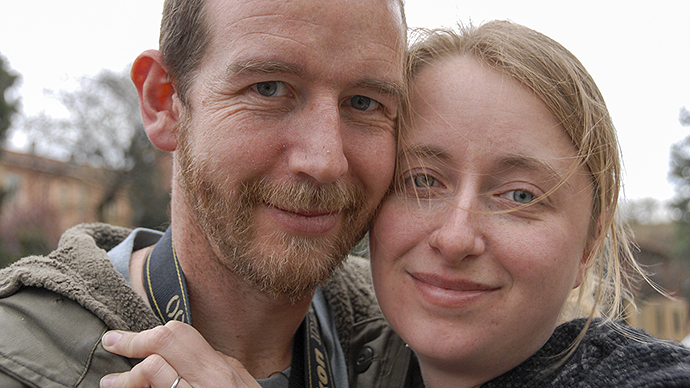
Margherita e Nick The Crowded Planet
Margherita and Nick, writer and photographer from Italy and Australia, are long-time travelers who love nature and outdoors.
Their blog is www.thecrowdedplanet.com
You may also like
Dante’s Ravenna: the most famous places of the city in 11 stages
by Davide Marino /// September 7, 2018

Interested in our newsletter?
Every first of the month, an email (in Italian) with selected contents and upcoming events.
